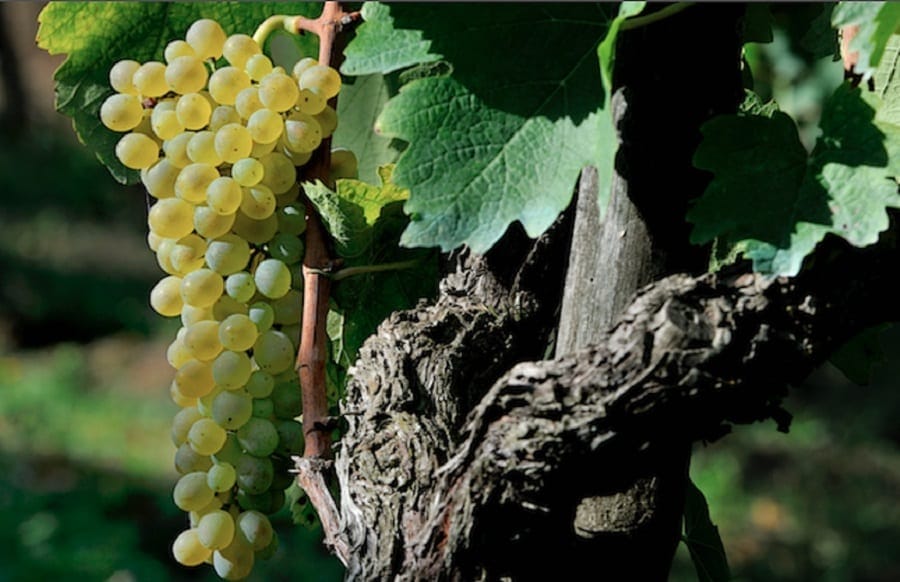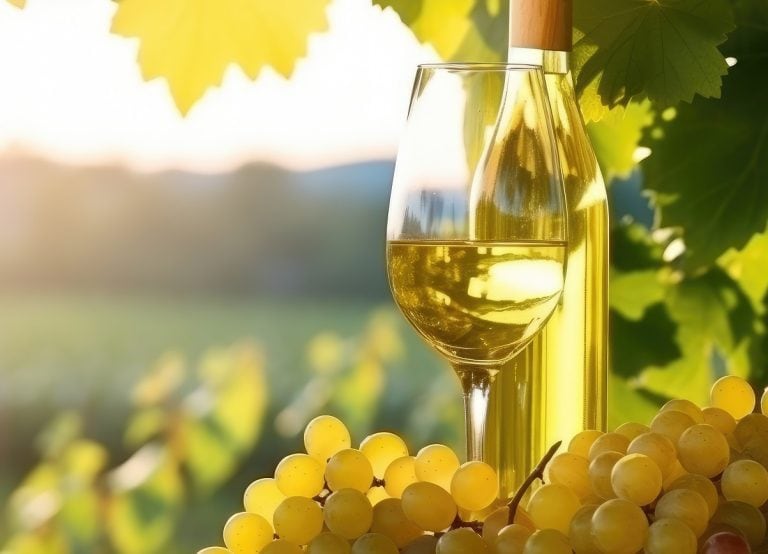Anyone familiar with Campanian wines knows that Falanghina, along with Aglibanico, is probably the grape with the most history behind it and is certainly one of the most closely tied to the region’s agricultural traditions. However, its widespread cultivation is not very ancient; in fact, it dates back "only" to the 1970s. If we start our story with the name, it seems to come from the mists of ancient history: the etymology derives from the Latin word "falanx," which refers to the stake used in those times to support the vine.
As we have already written, while we did find some minor flaws during the tastings of Campanian wines for the Gambero Rosso’s Vini d’Italia 2024 guide, the lights shine very brightly in the region. Just look at the Campanian wines awarded with the Tre Bicchieri (Three Glasses). Some areas are increasingly in the spotlight: while the Campi Flegrei are already a won bet, we want to place our next bets on the sun-drenched Mediterranean Cilento and the volcanic allure of Vesuvius, both districts that will gain more attention in the future. Sannio is also experiencing a great moment: as usual, Falanghina is relied upon to stand out in the regional and national panorama. Along with Aglianico, it is probably Campania’s oldest grape and strongly linked to regional agricultural tradition. Yet, its widespread diffusion, a sort of renaissance, occurred around the 1970s.

Over the centuries in Campania, two types of Falanghina have genetically differentiated: one from Campi Flegrei, whose spread is attributed to the Martusciello family, who recovered some century-old ungrafted vines grown on the slopes of Lake Averno.
The other is from Sannio, much more widespread, a variety that seems to originate from Bonea and was rediscovered by Leonardo Mustilli. The two varieties have adapted over the centuries to the territories where they were found, and the differences are still clearly perceptible in the wine: salinity and mineral sensations in the Campi Flegrei variety; acidity and structure in the Sannio variety. Falanghina vineyards are found in many other areas of Campania and beyond: over the years, the grape has crossed regional borders, establishing itself in Molise and northern Puglia.
The best Falanghina wines awarded with Tre Bicchieri and Due Bicchieri Rossi
Here we focus on the Falanghina wines from Sannio and Campi Flegrei that we awarded with Tre Bicchieri and Due Bicchieri Rossi in the Vini d’Italia 2024 guide.
Falanghina Vignasuprema '21 by Aia dei Colombi stands out within the company’s range. With hints of hay and field herbs, combined with whiffs of yellow spices and cedar, it is full-bodied, soft, with a fragrant citrusy background, offering an engaging and well-paced sip. The Pascale family has always been involved in agriculture. In 2002, following this long tradition, they decided to focus entirely on viticulture. The 11 hectares of vineyards, mainly planted with Aglianico and Falanghina, are located in the municipalities of Guardia Sanframondi and Castelvenere. The whites are enhanced through the use of steel containers, while the reds are preferred to mature in small wood barrels.
From Cantina di Solopaca’s Identitas line comes a 2022 Falanghina that we really liked. Quite typical with its herbaceous notes reminiscent of hay and wet grass, it opens up to warmer lemon pulp sensations. In the mouth, it is very precise, with a beautiful citrus perception in the mid-palate that extends with precision and flavour. This is one of the largest and most renowned cooperatives in Campania, covering 1100 hectares across 16 municipalities in Sannio, owned by 600 winegrowers. The technical management is entrusted to Vincenzo Mercurio, the creator of the new Identitas line, a result of a zoning work on the vast vineyard park available. The company’s range, which gives ample space to native grape varieties, is divided into different lines, with more immediate wines alongside more ambitious selections.
Falanghina del Sannio Senete '22 from the Janare line struck us as really good. Thanks to an elegant, fine aromatic profile, just outlined between citrus and fresh aromatic herbs. A subtle hint of linden flowers precedes a very tense, compact, juicy mouth with a savoury finish.
Falanghina Anima Lavica '22 differs richer sensations, good spiciness, notes of broom, and a vaguely smoky touch; in the mouth, it is precise, nuanced, and with good tension. To tell the story of significant entities like La Guardiense, one must start with the numbers. Founded in 1960 by 33 members, the cooperative has grown to astonishing levels. Today, it includes about a thousand contributors managing a vineyard of 1500 hectares, producing about six million bottles annually. The five production lines feature Aglianico and Falanghina as the main protagonists of a range that combines quality and affordability.
- Falanghina del Sannio Janare Senete 2022 - La Guardiense - Janare
- Falanghina del Sannio Janare Anima Lavica 2022 - La Guardiense Janare
Green apple, citrus, and meadow make up the aromatic profile of Falanghina Svelato '22 by Terre Stregate: good mouthfeel, pulpy and juicy, with a nicely progressing finish. Filomena and Carlo Iacobucci continue the company created by their father Armando in 1988 in the province of Benevento. Today, the family’s estates form a triangle between the municipalities of Castelvenere, Puglianello, and the main site of Guardia Sanframondi, an area of the Sannio Beneventano particularly suited for viticulture. Year after year, Terre Stregate has made its mark a guarantee for the production of labels based on Aglianico, Fiano, Greco, and especially Falanghina.
Falanghina del Sannio Taburno V.T. Libero 2019 is a very fascinating Late Harvest: a slight hint of hydrocarbons, smoky vein, dried aromatic herbs, sweet spices, a whiff of Mediterranean scrub, a highly nuanced aromatic profile that reflects in a balsamic, deep, soft yet tense palate. Fontanavecchia has made a significant contribution to the history of Sannio winemaking. The work begun in the 1990s by Orazio Rillo in Torrecuso has been consolidated by his sons Libero and Giuseppe, who have achieved great success through their efforts focused on the main Campanian grape varieties. The main stars are Fiano, Greco, Aglianico, and of course, Falanghina, which make up important selections like Vigna Cataratte, Grave Mora, Facetus, and Libero. And it is precisely the latter that has fully convinced us.
Falanghina 2021 by Contrada Salandra confirms itself as a great white wine from the region: medicinal herbs blend with mineral suggestions on a lively and tense palate. Giuseppe Fortunato can certainly be counted among the most enlightened winemakers in our country. When he talks about his Campi Flegrei, besides a profound knowledge, what stands out most is his love for such a beautiful yet fragile land. This passion is poured into his small vineyard, which he tries to expand by reclaiming small plots from abandonment, and into his production, with wines based on Falanghina and Piedirosso from vineyards scattered between Coste di Cuma, Monte Sant'Angelo, and Monteruscello.
The Falanghina '22 by La Sibilla is very good, awarded for the best quality-price ratio in Campania: lemon peel, slightly smoky, played on stone and aromatic herb tones, very savoury in the mouth. Bacoli is a locality in the Campi Flegrei, a volcanic area where the Sibyl’s Cave was located in ancient times. The name of the Di Meo family’s company refers to this myth, with a vineyard of about ten hectares, between owned and leased plots, with ungrafted vines combed by the breezes of the Tyrrhenian Sea on volcanic soils, a millennial amalgam of ashes and lapilli. Falanghina and Piedirosso are forged in this territory, and the varietal characters are left free to express themselves thanks to minimal intervention in the cellar.
Falanghina Colle Imperatrice '22 by Astroni is fragrant and elegant, agile, and with great progression on the palate. The Astroni hill, between Agnano and Pozzuoli, is part of the splendid Campi Flegrei area, where Piedirosso and Falanghina have historically been cultivated. The winery is one of the leading entities in the territory, with a viticultural heritage of 13 hectares of owned and 12 hectares of leased vineyards. The company is currently managed by Cristina Varchetta, who promotes the Campi Flegrei in Italy and worldwide, and Gerardo Vernazzaro, who transforms the grapes into an increasingly focused range.
Falanghina Vigna Segreta by Mustilli is the usual high-quality white: precise aromatically in the typical herbaceous and citrus traits, with a tense and vibrant sip where the vegetal notes return, supported by an intense acidic streak. If today Sannio is on everyone’s lips, it is also thanks to engineer Leonardo Mustilli, who in the late 1970s was the first to bottle a pure Falanghina, starting the great success of this important Campanian white. Today, the company is led by his daughters, Paola and Anna Chiara, who, with the technical support of Fortunato Sebastiano, year after year propose labels that tell the story of the territory of Sant’Agata dei Goti: Falanghina is the protagonist, but there are also successful interpretations of Aglianico and Piedirosso.


 Wine promotion, vineyard uprooting, and support for dealcoholised wines: the European Commission's historic compromise on viticulture
Wine promotion, vineyard uprooting, and support for dealcoholised wines: the European Commission's historic compromise on viticulture A small Sicilian farmer with 40 cows wins silver at the World Cheese Awards
A small Sicilian farmer with 40 cows wins silver at the World Cheese Awards Women are the best sommeliers. Here are the scientific studies
Women are the best sommeliers. Here are the scientific studies Where to eat at a farm stay in Sicily: the best addresses in the Provinces of Trapani, Palermo, and Agrigento
Where to eat at a farm stay in Sicily: the best addresses in the Provinces of Trapani, Palermo, and Agrigento Wine in cans, bottle-fermented, and alcohol free: the unstoppable change in Gen Z’s tastes
Wine in cans, bottle-fermented, and alcohol free: the unstoppable change in Gen Z’s tastes






